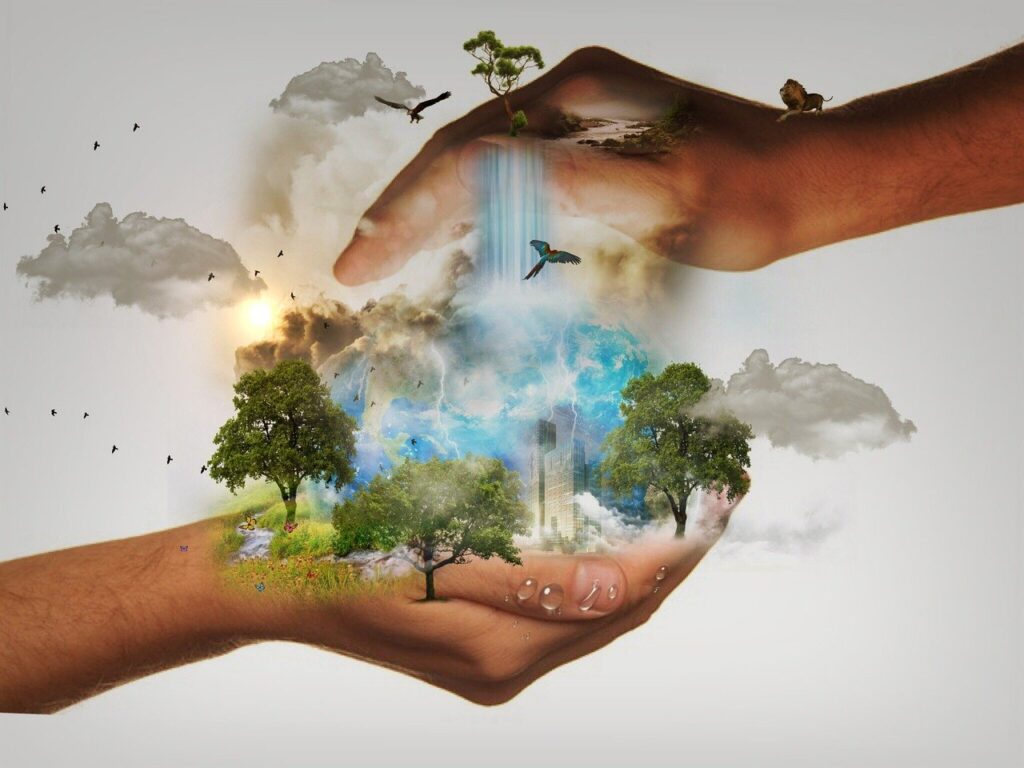Mushrooms have captivated human imagination for millennia, bridging the gap between the mundane and the mystical. These extraordinary organisms offer us medicine, nutrition, ecological balance, and even spiritual experiences.
Far from being simple plants, fungi represent an entire kingdom of life with complexities that scientists are only beginning to understand. Their underground networks communicate, share resources, and sustain entire ecosystems in ways that challenge our understanding of intelligence and cooperation in nature.
🍄 The Hidden Kingdom Beneath Our Feet
When we see a mushroom sprouting from the forest floor, we’re witnessing only a tiny fraction of the organism itself. The mushroom is merely the fruiting body—comparable to an apple on a tree—while the true organism exists as an extensive network of thread-like structures called mycelium that spread through soil, wood, and other organic matter.
This mycelial network can extend for miles underground, creating what scientists call the “wood wide web.” Through this intricate system, fungi connect trees and plants, facilitating the exchange of nutrients, water, and even chemical signals that warn of disease or pest attacks. In many ways, mycelium functions as nature’s internet, predating human technology by hundreds of millions of years.
The sheer scale of fungal networks is astounding. In Oregon’s Blue Mountains, scientists discovered a single Armillaria ostoyae specimen covering 2,384 acres and estimated to be between 2,400 and 8,650 years old, making it one of the largest and oldest living organisms on Earth.
Ancient Wisdom: Mushrooms Throughout Human History
Archaeological evidence suggests that humans have been utilizing mushrooms for at least 10,000 years. The famous “Iceman” mummy discovered in the Alps, dating back 5,300 years, carried two types of mushrooms—one likely used for medicinal purposes and another for starting fires.
Ancient cultures across the globe recognized the special properties of various mushroom species. Traditional Chinese medicine has employed fungi like Reishi and Cordyceps for thousands of years to promote longevity and vitality. Indigenous peoples of Mesoamerica used psilocybin mushrooms in religious ceremonies, calling them “teonanácatl” or “flesh of the gods.”
In European folklore, mushrooms held an ambivalent position—respected for their nutritional value yet feared for their mysterious appearance and sometimes deadly nature. Fairy rings, circular formations of mushrooms, were believed to be portals to magical realms or dancing grounds for supernatural beings.
Mushrooms in Traditional Medicine Systems
Eastern medicine traditions have maintained detailed knowledge of medicinal mushrooms for centuries. Practitioners prescribed specific fungi for distinct ailments, creating a sophisticated pharmacopeia long before Western science began investigating these compounds.
Turkey Tail mushrooms were traditionally used to support immune function. Lion’s Mane was valued for mental clarity and cognitive health. Chaga, growing on birch trees in cold climates, was consumed as a tea for vitality and longevity. Modern research is now validating many of these traditional uses, discovering compounds with genuine therapeutic potential.
The Science Behind Fungal Magic ✨
Contemporary mycology—the scientific study of fungi—has revealed that mushrooms possess remarkable biochemical capabilities. These organisms produce thousands of unique compounds, many of which have profound effects on human physiology and consciousness.
Fungi occupy a unique position in the tree of life. They’re more closely related to animals than plants, sharing certain metabolic processes with humans. This similarity may explain why fungal compounds often interact so effectively with human biology.
The cell walls of fungi contain chitin, the same substance found in insect exoskeletons. Their digestive process happens externally—they secrete enzymes that break down organic matter, then absorb the resulting nutrients. This ability to decompose almost any organic material makes fungi essential recyclers in every ecosystem.
Bioactive Compounds and Human Health
Research has identified numerous bioactive substances in mushrooms with potential health benefits. Beta-glucans, found in many edible species, appear to modulate immune function. Ergothioneine, a powerful antioxidant that humans cannot produce, is abundant in mushrooms and may protect against cellular damage.
Certain mushroom compounds demonstrate antimicrobial properties, potentially offering new weapons against antibiotic-resistant bacteria. Others show promise in cancer research, with studies investigating how polysaccharides from species like Shiitake and Maitake might support conventional cancer treatments.
Perhaps most intriguingly, psilocybin—the psychoactive compound in “magic mushrooms”—has emerged as a breakthrough therapy for treatment-resistant depression, PTSD, and end-of-life anxiety. Clinical trials have shown remarkable success rates, leading to regulatory approval processes in several countries.
Culinary Treasures: Mushrooms as Food 🍽️
Beyond their medicinal properties, mushrooms offer exceptional nutritional value. They’re low in calories yet rich in protein, fiber, vitamins, and minerals. Many species provide significant amounts of vitamin D, particularly when exposed to sunlight—a rare quality in non-animal food sources.
The umami flavor of mushrooms adds depth and satisfaction to countless dishes. This savory taste comes from glutamate compounds, the same substances that make aged cheese, soy sauce, and tomatoes so appealing. For this reason, mushrooms serve as excellent meat substitutes in plant-based cooking.
Culinary mushroom varieties range from the familiar button mushroom to exotic delicacies. Chanterelles offer a fruity, peppery flavor. Morels, with their honeycomb appearance, command premium prices and appear briefly each spring. Porcini mushrooms, prized in Italian cuisine, deliver an intense, nutty flavor that enhances risottos and sauces.
Foraging and Safety Considerations
The practice of mushroom foraging connects people with nature and provides access to varieties rarely found in stores. However, wild mushroom hunting requires extensive knowledge, as many edible species have toxic look-alikes. Several deadly mushrooms, particularly Amanita species, can cause fatal liver damage.
Responsible foraging means never consuming any mushroom without absolute certainty of identification. Field guides, while helpful, should be supplemented with expert guidance. Many communities offer mushroom identification courses or foraging groups where experienced hunters share their knowledge.
Sustainable foraging practices include harvesting only what you’ll use, leaving some mushrooms to disperse spores, and cutting rather than pulling mushrooms to preserve the underground mycelium. These practices ensure that fungal populations remain healthy for future seasons.
Ecological Champions: Fungi’s Environmental Role 🌍
Fungi serve as nature’s primary decomposers, breaking down dead organic matter and returning nutrients to the soil. Without fungi, forests would be buried under layers of undecomposed leaves, branches, and fallen trees. This decomposition process is fundamental to nutrient cycling in virtually every terrestrial ecosystem.
Mycorrhizal relationships—symbiotic partnerships between fungi and plant roots—support an estimated 90% of plant species. The fungus provides the plant with water and nutrients, particularly phosphorus, while receiving sugars produced through photosynthesis. This exchange network dramatically increases plants’ absorptive surface area and stress tolerance.
Recent research suggests that these fungal networks may help forests respond to climate change. Trees under stress can send distress signals through mycelial connections, and neighboring trees may respond by sharing resources. Older “mother trees” appear to support younger seedlings through these networks, challenging our understanding of competition in nature.
Mycoremediation: Fungi as Environmental Healers
Scientists are discovering that certain fungi can break down environmental pollutants, including petroleum products, pesticides, and even radioactive materials. This process, called mycoremediation, offers hope for cleaning contaminated sites naturally and affordably.
Oyster mushrooms have demonstrated an ability to break down oil spills and convert toxic compounds into harmless substances. Other species can absorb heavy metals from soil, potentially cleaning up industrial waste sites. After the Chernobyl disaster, researchers found fungi thriving in highly radioactive areas, apparently using melanin to harvest energy from radiation.
Paul Stamets, a renowned mycologist, has pioneered practical applications of mycoremediation. His work demonstrates how strategic fungal deployment can restore damaged ecosystems, filter agricultural runoff, and even break down cigarette butts and diapers in waste streams.
Growing Your Own: Home Mushroom Cultivation 🏡
The rise of home mushroom cultivation has made fresh, gourmet varieties accessible to anyone. Growing mushrooms requires different techniques than gardening with plants, but once you understand the basics, it’s remarkably straightforward.
Mushroom cultivation involves several stages: inoculating a growing medium (substrate) with mushroom spawn, allowing the mycelium to colonize the substrate, then triggering fruiting conditions through changes in temperature, humidity, and light. Different species have different requirements, but many popular varieties are quite forgiving.
Oyster mushrooms rank among the easiest for beginners. They grow rapidly on diverse substrates including straw, coffee grounds, and sawdust. Shiitake mushrooms take longer but produce meaty, flavorful fruits with excellent keeping qualities. Lion’s Mane mushrooms create stunning white cascades and offer potential cognitive benefits.
Simple Methods for Beginners
Ready-to-fruit mushroom kits provide the easiest entry point. These kits contain fully colonized substrate that needs only water and proper conditions to produce mushrooms within days. They’re perfect for learning the basics before investing in more advanced setups.
Coffee ground cultivation offers an eco-friendly approach. Spent coffee grounds provide an ideal, pre-sterilized substrate for oyster mushrooms. Many growers collect used grounds from cafés, inoculate them with spawn, and produce flushes of mushrooms within weeks using minimal equipment.
For those ready to go further, building a fruiting chamber allows year-round cultivation of multiple species. A simple setup might include a plastic storage container, a humidity controller, and a small fan. More elaborate systems incorporate shelving, lighting, and automated climate control.
The Consciousness Connection: Psychedelic Mushrooms 🧠
Psilocybin mushrooms occupy a unique space in both ancient spiritual traditions and cutting-edge neuroscience. These mushrooms contain compounds that profoundly alter consciousness, producing experiences that users often describe as among the most meaningful of their lives.
When consumed, psilocybin converts to psilocin, which interacts with serotonin receptors in the brain. This interaction disrupts normal patterns of neural activity, potentially allowing new connections to form and rigid thought patterns to dissolve. Brain imaging studies show that psilocybin decreases activity in the default mode network—the brain regions associated with self-referential thinking and ego.
The therapeutic potential of these substances has led to what some call a “psychedelic renaissance.” Clinical studies have demonstrated that psilocybin-assisted therapy can produce rapid, lasting improvements in depression, anxiety, addiction, and PTSD—often with just one or two guided sessions.
Legal and Ethical Considerations
Despite promising research, psilocybin mushrooms remain illegal in most jurisdictions. However, this is changing. Several cities in the United States have decriminalized possession, and Oregon has legalized supervised therapeutic use. Other countries maintain different approaches, from complete prohibition to de facto tolerance.
The ethical questions surrounding psychedelic mushrooms extend beyond legality. Indigenous communities who have stewarded these substances for generations sometimes express concern about commercialization and cultural appropriation. Respectful engagement requires acknowledging these traditions and supporting indigenous rights and wisdom.
For those interested in exploring consciousness with mushrooms, harm reduction principles are essential. This includes verifying species identification, understanding proper dosing, ensuring a safe environment, and having a trusted person present. These substances demand respect and appropriate preparation.
Future Frontiers: Innovation Through Fungi 🚀
The mushroom revolution extends far beyond food and medicine. Innovators are discovering that fungal materials can replace plastics, leather, building materials, and more—offering sustainable alternatives to environmentally destructive products.
Mycelium-based packaging is already commercially available. Companies grow packaging materials by feeding mycelium agricultural waste in molds. After a few days, the result is a strong, protective material that’s completely compostable. This technology could eventually replace Styrofoam and plastic packaging entirely.
Mushroom leather, also called mycelium leather, offers an ethical alternative to animal hides and plastic-based synthetic leathers. The material can be grown to specification in weeks rather than the years required to raise livestock. Several fashion brands have already incorporated mycelium leather into their products.
Biofabrication and Construction
Architects are experimenting with mycelium as a building material. When grown in molds and then dried, mycelium creates lightweight, insulating, fire-resistant bricks. These materials are carbon-negative, biodegradable, and can be produced locally from agricultural waste.
Researchers are developing mycelium composites that could replace particle board, insulation, and other construction materials. The potential environmental benefits are enormous—reducing deforestation, eliminating toxic glues and binders, and sequestering carbon in building materials.
Even more speculatively, scientists are exploring whether mycelium could be used in space exploration. Fungi require minimal inputs, can recycle waste, provide nutrition, and create building materials—making them ideal for long-duration space missions or establishing habitats on other planets.
Embracing the Fungal Future 🌟
As we deepen our relationship with the fungal kingdom, we’re rediscovering wisdom that traditional cultures never lost. Mushrooms connect us to natural cycles, remind us of the intelligence inherent in all life, and offer solutions to many modern challenges.
The more we learn about fungi, the more we realize how little we truly understand. Scientists estimate that we’ve identified only 5-10% of fungal species. Each new discovery reveals additional complexity and potential. The mycelium beneath our feet represents an ancient intelligence, operating according to principles we’re only beginning to grasp.
Whether we’re cooking with mushrooms, exploring their healing properties, growing them at home, or developing innovative mycelium technologies, we’re participating in a growing movement. This movement recognizes that solutions to environmental degradation, health crises, and material sustainability may come from working with nature rather than against it.
The magical world of mushrooms invites us to look beyond the visible, to appreciate the networks and relationships that sustain life, and to reconsider our place in the web of existence. In fungi, we find teachers, healers, sustainers, and partners—organisms that have shaped life on Earth and continue to offer wisdom for our collective future.
As we face unprecedented environmental and social challenges, mushrooms remind us that transformation is natural, that death feeds life, and that the strongest networks are built on mutual support rather than competition. By unveiling Earth’s fungal wisdom, we may just discover the keys to our own survival and flourishing.
Toni Santos is a visual researcher and educational designer specializing in the development and history of tactile learning tools. Through a hands-on and sensory-focused lens, Toni investigates how physical objects and textures have been used to enhance understanding, memory, and creativity across cultures and ages, while exploring the transformative practices of shamanic journeying, sacred plant medicines, and spiritual rituals. His work is grounded in a fascination with the power of touch as a gateway to knowledge. From embossed maps and textured alphabets to handcrafted manipulatives and sensory kits, Toni uncovers the subtle ways tactile tools shape cognitive development and learning experiences, while engaging with shamanic journeying and altered states, sacred plant medicines and their use, spirit animals and totems, and rituals for personal transformation. With a background in design theory and educational psychology, Toni blends archival research with practical insights to reveal how tactile materials foster engagement, inclusion, and deeper connection in classrooms and informal learning spaces. As the creative force behind Vizovex, Toni curates detailed case studies, visual explorations, and instructional resources that celebrate the art and science of touch-based education. His work is a tribute to: The transformative role of tactile tools in learning The intersection of sensory experience, cognition, and spiritual insight The craft and innovation behind educational objects and ritual practices Whether you’re an educator, designer, or lifelong learner, Toni invites you to explore the rich textures of knowledge—one touch, one tool, one discovery at a time.




